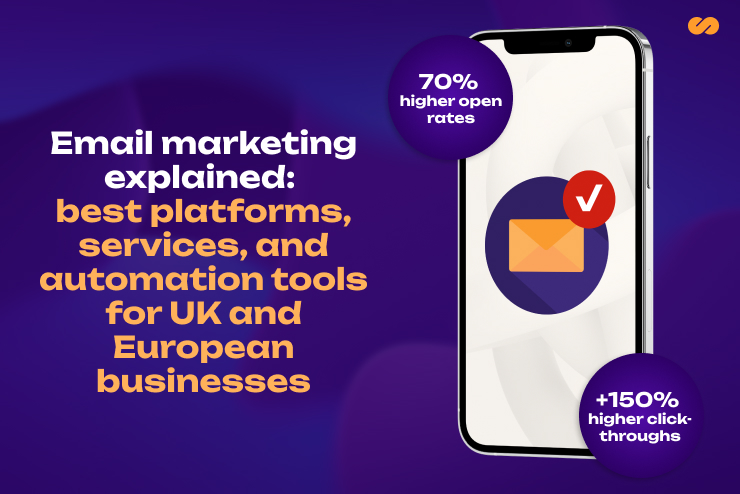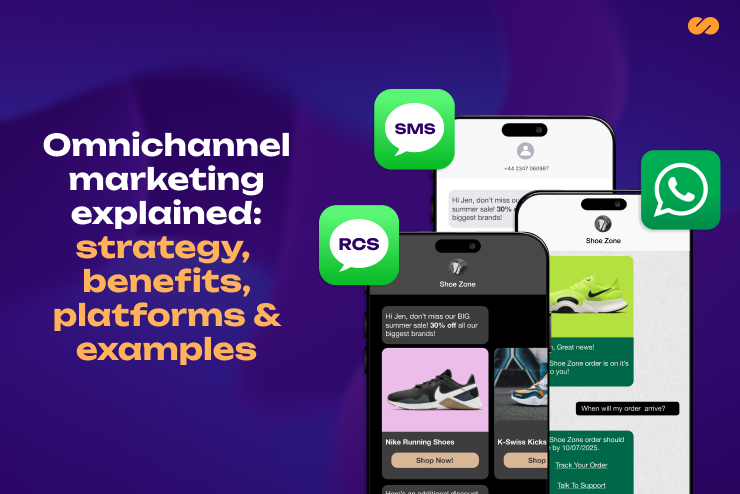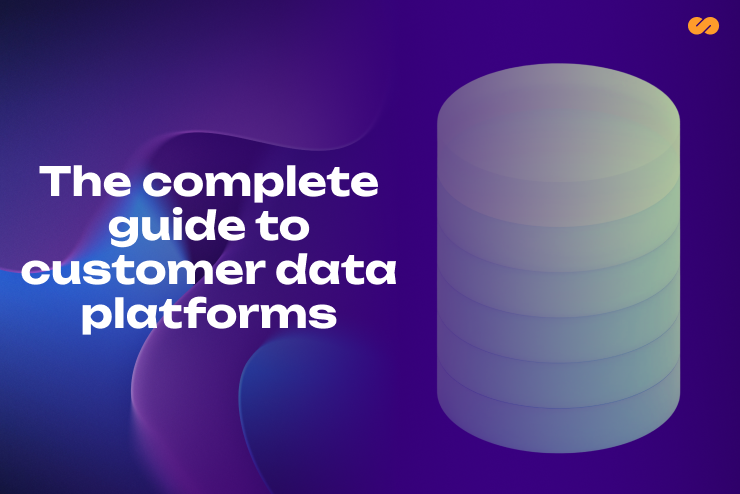The Cookieless Future: Impact on CRM Strategies and Conversion Rate Optimisation
The digital marketing landscape is on the cusp of a significant transformation due to the imminent shift towards a cookieless future. Google’s continued delays in phasing out third-party cookies give businesses a critical window to adapt their CRM (Customer Relationship Management) strategies and conversion rate optimization (CRO) practices. In this blog post, we explore how the cookieless future will impact these areas and provide actionable insights on how businesses can thrive in this new environment. At SaleCycle, we do not rely on cookies. This demonstrates that it is possible to thrive without third-party tracking.

What is the Cookieless Future?
Third-party cookies have been integral to digital marketing, enabling businesses to track user behavior, deliver personalized ads, and optimize conversion rates. However, rising concerns over privacy and data security have spurred significant changes. Major browsers like Safari and Firefox have already blocked third-party cookies, and Google Chrome, with its dominant market share, is set to follow suit.
Implications for CRM strategies
CRM systems rely on data to create personalized experiences and build customer loyalty. The removal of third-party cookies presents both challenges and opportunities for CRM strategies.
Challenges
Data Collection: Without third-party cookies, collecting granular data on user behavior across different websites becomes challenging. This data is essential for understanding customer preferences and tailoring marketing efforts.
Personalisation: Customizing interactions becomes more difficult when data sources are limited, potentially leading to less relevant marketing messages.
Customer Segmentation: Effective CRM depends on segmenting customers based on their behavior and preferences. The loss of third-party cookies complicates the process of creating detailed customer segments. Encouraging users to log in and creating valuable, engaging experiences can help gather more first-party data.
Opportunities
First-Party Data: Businesses can leverage first-party data, collected directly from their websites and apps. This data is often more accurate and reliable than third-party data. Encouraging users to log in and creating valuable, engaging experiences can help gather more first-party data.
Contextual Targeting: Shifting focus to contextual targeting, where ads are placed based on the content of the web page rather than user behavior, can help maintain relevance without relying on cookies.
Customer Trust: Transparency and trust are becoming increasingly important. By prioritizing privacy and clearly communicating data practices, businesses can build stronger relationships with their customers.
Check out our Reach module to learn more about effective strategies for reaching your target audience without relying on third-party cookies.
Conversion rate optimisation in a cookieless world
CRO involves improving the percentage of visitors who complete desired actions on a website, such as making a purchase or signing up for a newsletter. The removal of third-party cookies necessitates new approaches to CRO.
Challenges
User Tracking: Tracking user journeys across different sessions and devices becomes more complex without third-party cookies. This fragmentation can make it harder to identify points of friction in the conversion process.
A/B Testing: Conducting A/B tests to determine the most effective website elements may be less accurate without detailed user data. Understanding which variations drive the highest conversions could be more challenging.
Personalised Experiences: Delivering personalised content and recommendations, a key aspect of CRO, will be more difficult without the ability to track users across different sites.
Opportunities
Enhanced User Experience: Focusing on improving the overall user experience (UX) can drive conversions. Streamlined navigation, faster load times, and intuitive design are all critical factors that can enhance UX and lead to higher conversion rates.
AI and Machine Learning: Leveraging AI customer segmentation and machine learning can help analyse first-party data to identify patterns and predict user behaviour. These technologies can enable more effective personalization and optimization efforts.
Engagement Strategies: Utilizing engagement strategies such as email marketing, loyalty programs, and social media can help maintain customer relationships and drive conversions. These channels can provide valuable touchpoints for collecting first-party data and nurturing leads.
Dive deeper into retention strategies by exploring our Retain module.
Strategies for adapting to a cookieless future
To successfully navigate the cookieless future, businesses need to implement robust strategies that leverage alternative data sources and prioritize customer relationships. At SaleCycle, where we have successfully operated without relying on cookies, we offer a valuable model for adaptation.
Check out our Reach module to learn more about effective strategies for reaching your target audience without relying on third-party cookies.
Emphasise first-party data collection
Encouraging users to create accounts and log in allows businesses to collect valuable first-party data. Offering incentives such as exclusive content, discounts, or personalized experiences can motivate users to share their information. Additionally, optimizing website forms and ensuring a smooth user experience can help capture more data without relying on third-party cookies.
First-party data is more reliable and accurate, and businesses should invest in gathering as much of it as possible. Utilising methods such as surveys, feedback forms, and direct user interactions can help in this regard. Additionally, creating content that requires user registration can be an effective way to collect first-party data.
Utilise server-side tracking
Server-side tracking involves collecting data directly from the server, bypassing the need for third-party cookies. This method can provide more accurate and reliable data, as it is less susceptible to ad blockers and privacy restrictions. Implementing server-side tracking can help businesses maintain insights into user behaviour and optimize their marketing efforts.
Server-side tracking can help businesses overcome the limitations posed by third-party cookie restrictions. By capturing data directly from the server, businesses can track user behaviour more reliably and ensure data accuracy. This approach also helps in maintaining compliance with privacy regulations and builds trust with users.
Invest in Data Management Platforms (DMPs) and Customer Data Platforms (CDPs)
DMPs and CDPs can help businesses centralize and manage their data more effectively. These platforms allow for the integration of first-party data from various sources, enabling a more comprehensive view of customer behaviour. By leveraging these tools, businesses can enhance their CRM strategies and improve their CRO efforts.
DMPs and CDPs provide businesses with a holistic view of their customers, enabling them to create detailed customer profiles and segment them effectively. These platforms also offer advanced analytics capabilities, allowing businesses to gain insights into customer behaviour and preferences. By investing in these tools, businesses can optimize their marketing efforts and improve customer engagement.
Focus on contextual advertising
Contextual advertising, which targets users based on the content they are currently viewing, is a privacy-friendly alternative to behaviour-based targeting. By delivering relevant ads in the right context, businesses can maintain engagement and drive conversions without relying on third-party cookies. This approach can also enhance the user experience by providing more relevant and timely content.
Contextual advertising allows businesses to reach their target audience without infringing on their privacy. By analyzing the content of the webpage, businesses can serve ads that are relevant to the user's interests, increasing the likelihood of engagement. This method also ensures that ads are displayed in a context that makes sense to the user, enhancing their overall experience.
Prioritise Transparency and User Consent
Building trust with customers is crucial in a cookieless future. Clearly communicating data practices and obtaining explicit user consent for data collection can help establish transparency and foster trust. Implementing robust privacy policies and ensuring compliance with regulations such as GDPR and CCPA can also demonstrate a commitment to protecting user data.
Transparency is key to building trust with users. Businesses should provide clear and concise information about their data collection practices and obtain explicit consent from users. Implementing robust privacy policies and ensuring compliance with regulations such as GDPR and CCPA can help businesses build trust with users and demonstrate their commitment to protecting their privacy.
Leverage predictive analytics and machine learning
Predictive analytics and machine learning can help businesses analyze first-party data to track website visitors, identify trends and predict user behavior. These technologies can enable more effective personalization and optimisation efforts, even without third-party cookies. By leveraging advanced analytics, businesses can gain valuable insights and make data-driven decisions to enhance their CRM strategies and CRO practices.
Predictive analytics and machine learning can help businesses make sense of the vast amounts of first-party data they collect. By analysing this data, businesses can identify patterns and trends that can inform their marketing efforts. These technologies can also help businesses predict user behavior, enabling them to deliver personalized experiences that drive engagement and conversions.
Discover more about re-engagement tactics in our Re-engage module.
Conclusion
The transition to a cookieless future presents both challenges and opportunities for businesses. While the loss of third-party cookies complicates data collection and personalisation efforts, it also encourages a shift towards more sustainable and privacy-friendly practices. By emphasising first-party data, investing in advanced analytics, and prioritizing user trust, businesses can adapt their CRM strategies and conversion rate optimization efforts to thrive in this new landscape. At SaleCycle, we have navigated seamlessly through the cookieless landscape and serve as an excellent example of how to succeed without third-party cookies.
As the deadline for phasing out third-party cookies approaches, businesses must act swiftly to implement these strategies and stay ahead of the curve. By embracing the cookieless future, companies can not only protect user privacy but also build stronger customer relationships and drive long-term success.
Takeaways
- The cookieless future is driven by growing privacy concerns and regulatory changes, necessitating a shift in digital marketing strategies.
- CRM strategies must adapt by emphasising first-party data collection, contextual targeting, and building customer trust.
- Conversion rate optimisation requires new approaches, focusing on enhanced user experiences, AI and machine learning, and engagement strategies.
- Businesses should invest in data management platforms, server-side tracking, and predictive analytics to maintain insights and optimise marketing efforts.
- Transparency, user consent, and compliance with privacy regulations are critical for building trust and maintaining customer relationships in a cookieless world.
By understanding these implications and implementing the recommended strategies, businesses can effectively navigate the cookieless future and continue to optimise their CRM and CRO practices for sustained growth and success.





